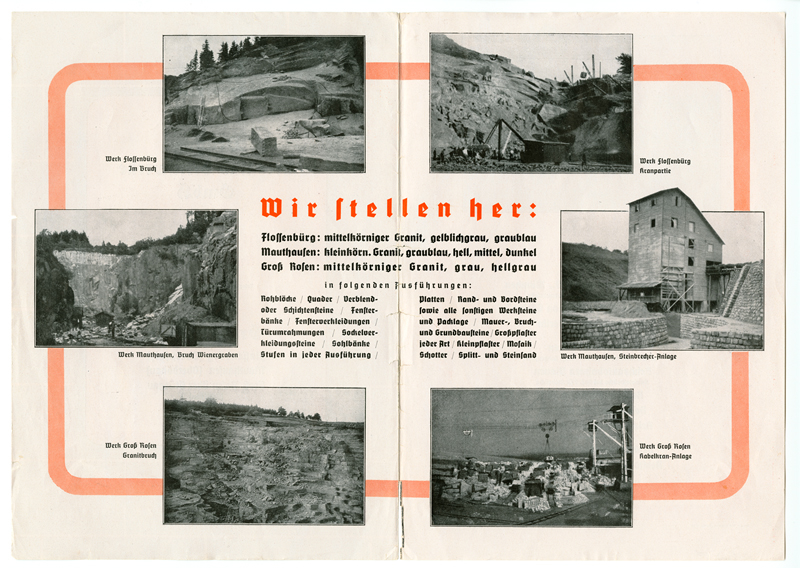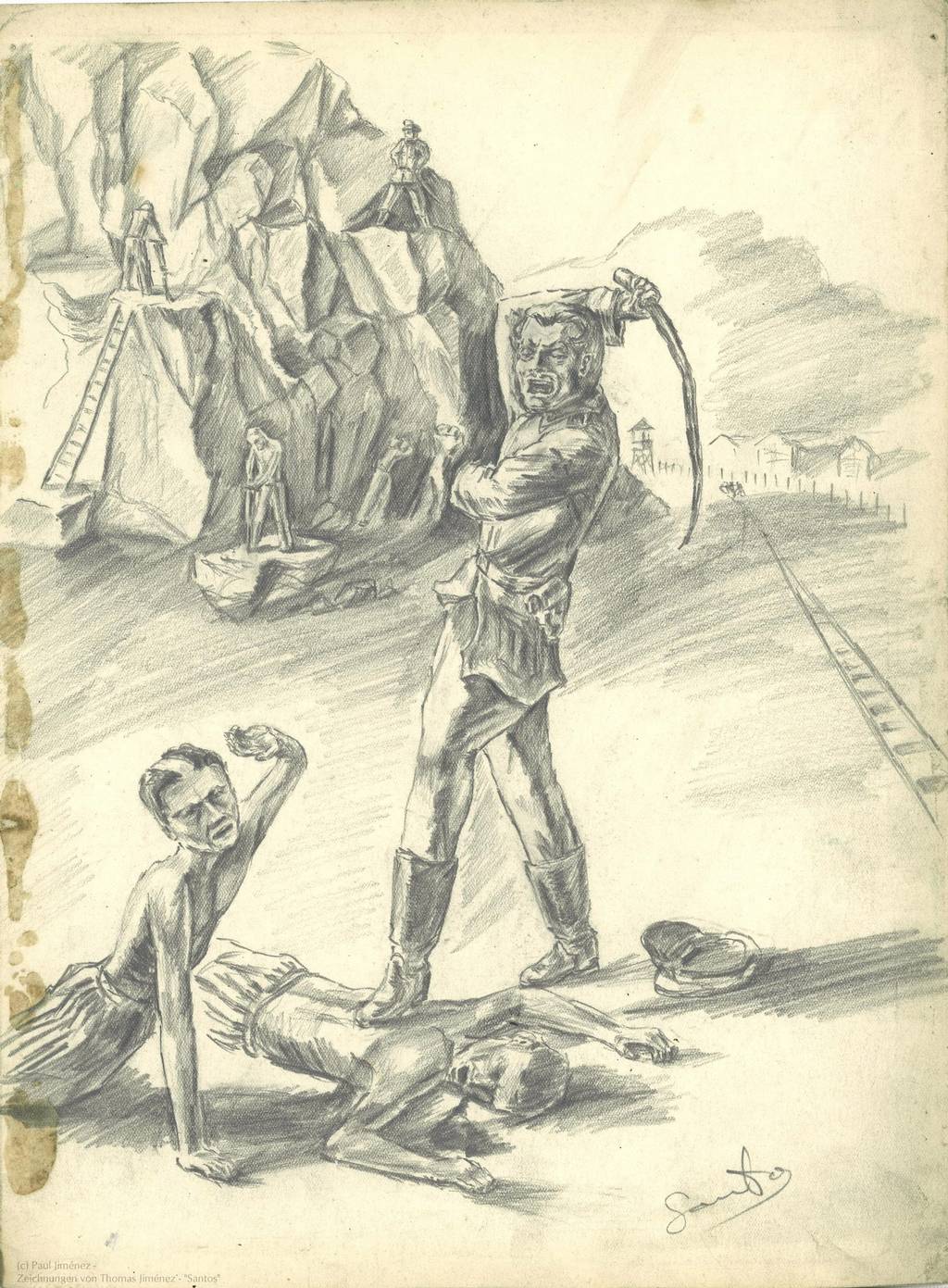Forced Labour in the Quarries
 Deutsche Erd- und Steinwerke advertising brochure, between 1940 and 1945 (Archiv der Zeugen Jehovas, Selters/Taunus)In Mauthausen the SS operated one, and in Gusen three, quarries. Its main aim was to produce granite blocks for the expansion of the Führerstadt Linz. Subsequently, the ‘Granitwerke Mauthausen’ was to develop into the largest and most productive branch of the DESt.
Deutsche Erd- und Steinwerke advertising brochure, between 1940 and 1945 (Archiv der Zeugen Jehovas, Selters/Taunus)In Mauthausen the SS operated one, and in Gusen three, quarries. Its main aim was to produce granite blocks for the expansion of the Führerstadt Linz. Subsequently, the ‘Granitwerke Mauthausen’ was to develop into the largest and most productive branch of the DESt.
In 1942 over 3,300 prisoners were working in the concentration camp quarries in Mauthausen and Gusen. They worked under a SS-Kommandoführer (SS work detachment leader) and were driven on by fellow prisoners, known as Kapos. Civilian foremen were also employed in concentration camp quarries and were responsible for overseeing the technical side of the prisoners’ work.
For the prisoners, the working day lasted at least eleven hours in summer and around nine hours in winter. They worked in all weathers. The work was exhausting. First the prisoners had to break blocks of stone from the cliff by hand or using explosives. Then they had to hack them into smaller pieces and transport them out of the quarry.
 Mistreatment in the quarry, drawing by Tomás Jiménez Santos, between 1946 and 1948 (Paul Jimenez)The Mauthausen and Gusen quarries were sites of forced labour and places of annihilation in equal measure. While, on the one hand, there was a permanent shortage of skilled labour in the quarries, on the other the prisoners were systematically worked to death. Back-breaking work as punishment and deliberate killing operations were part of everyday life. Prisoners were assigned to the Strafkompanie (penal company) on trivial pretexts or the least violation of the camp regulations. Being in the penal company meant having to carry granite blocks weighing up to 50 kg on a wooden frame on their backs to construction sites in the camp. The march up the quarry steps was accompanied by beatings from the guards. Members of the penal company did not usually survive long. In 1941 and 1942, Dutch Jews especially were pushed to their deaths over the edge of the quarry cliff by the SS and Kapos, something recorded in official camp documents as ‘suicide by jumping’. The cynical name given by the SS to prisoners killed in this way was ‘parachutists’.
Mistreatment in the quarry, drawing by Tomás Jiménez Santos, between 1946 and 1948 (Paul Jimenez)The Mauthausen and Gusen quarries were sites of forced labour and places of annihilation in equal measure. While, on the one hand, there was a permanent shortage of skilled labour in the quarries, on the other the prisoners were systematically worked to death. Back-breaking work as punishment and deliberate killing operations were part of everyday life. Prisoners were assigned to the Strafkompanie (penal company) on trivial pretexts or the least violation of the camp regulations. Being in the penal company meant having to carry granite blocks weighing up to 50 kg on a wooden frame on their backs to construction sites in the camp. The march up the quarry steps was accompanied by beatings from the guards. Members of the penal company did not usually survive long. In 1941 and 1942, Dutch Jews especially were pushed to their deaths over the edge of the quarry cliff by the SS and Kapos, something recorded in official camp documents as ‘suicide by jumping’. The cynical name given by the SS to prisoners killed in this way was ‘parachutists’.